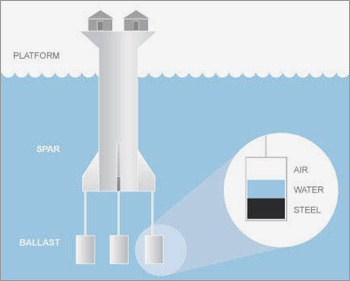Seasteading Floating Home Project Gets $500k Boost
It's not exactly consumer electronics, but if you're of the mind that a person's biggest gadget is their home, then Patri Friedman and Wayne Gramlich's Seasteading project might tempt your credit card out of your wallet. Originally conceived as a way to experiment with "diverse social, political, and legal systems", the scheme involves floating spars topped with habitats, communications relays and solar panels, gathered into self-governing enclaves. Based on the same ballasting system that some oil rigs use, the technical side of the project is reasonable; however it's the community aspect that is perhaps more far-fetched.

The concept suggests that, where changing populations and public-sector models in traditional habitats is difficult and time-expensive, using Seasteads would enable people to relatively easily move between different types of government. Each Seastead consists of a concrete-reinforced main pillar and tethered ballast weights. Adjusting the water in the ballast raises or lowers the spar in the water, while the small cross-section makes it resistant to strong waves.
An average of 300 square feet of space inside could be used for residential, acquaculture or tourism purposes, and the two creators are remaining flexible in terms of what Seastead clusters could be used for. Predicted costs are a few hundred million dollars to build a Seastead for a few thousand people, and the pair have already received a $500,000 donation from PayPal founder Peter Thiel.
[via Wired]
